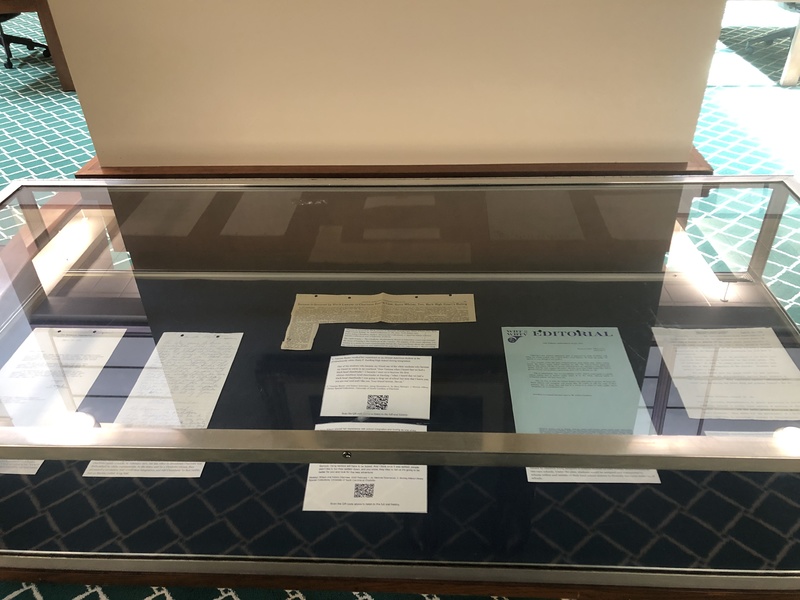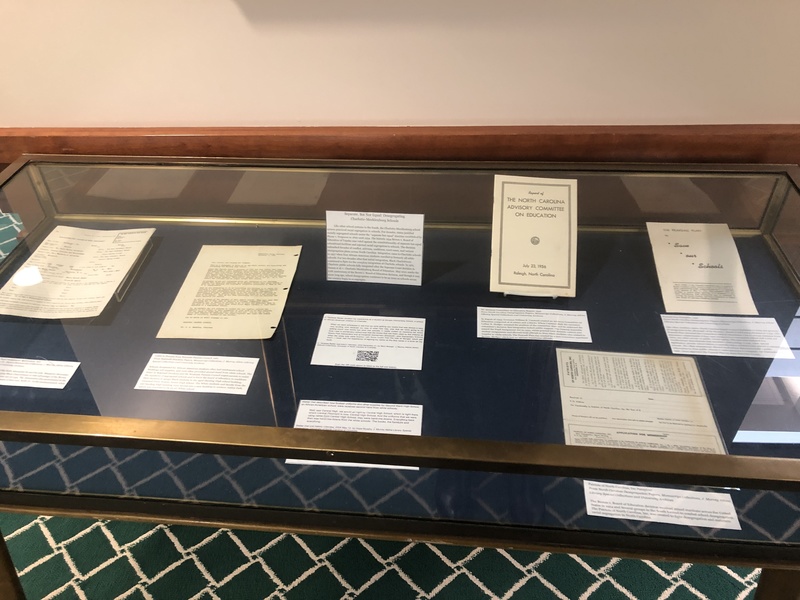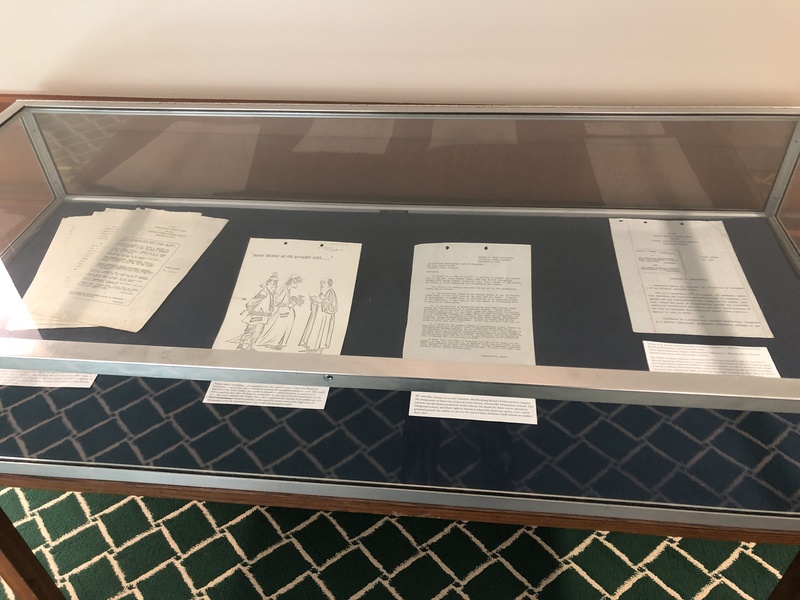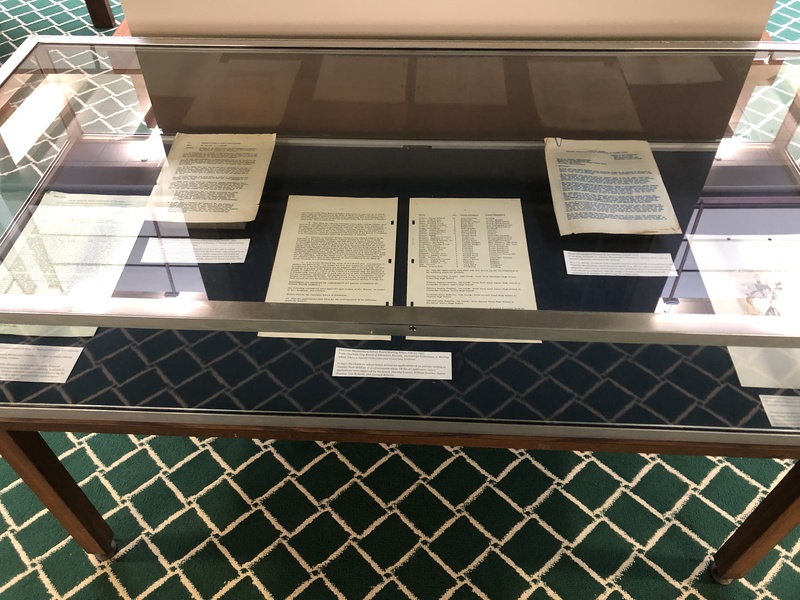Separate, But Not Equal Exhibit

Separate but Not Equal case 1
This case showcases the inequity between Black and White schools during the period and early reactions to the 1954 Brown v. Board of Education on the local and state levels. The right side of the case shows North Carolina’s response to the Brown verdict. The left side includes examples of resistance from Black parents as they attempted to protest the allotment of inadequate resources in predominantly Black schools and to make use of the Pupil Assignment Act to integrate local public schools. The case includes two oral histories from C. Vanessa Baxter and Walter Dial describing the unequal facilities and supplies African-American schools received compared to predominantly White schools.

Separate but not equal Case 2
The Struggle for Desegregation Case #2:
Despite the Supreme Court calling for the desegregation of schools “with all deliberate speed,” the road toward integration in Charlotte schools required state and local activism. This case features evidence of the effort by local activists to push for the local school board to comply with the Brown decision. Some materials include a petition sent to the school board by the president of the Charlotte chapter of the NAACP and notes from a 1957 Charlotte-Mecklenburg School Board approving the pupil assignment applications of five African-American to predominantly White schools.

Separate but Not Equal Exhibit Case 3
Integration Comes to Charlotte Case #3:
The case focuses on the difficult process of desegregation in the Charlotte area. Charlotte public schools integration on September 4, 1957, when four African-American students attended several formerly all-White schools. The newspaper places the integration efforts in Charlotte within the context of nation-wide efforts to integrate public schools. The case also features a letter highlighting the difficulties faced by African-American educators and the story of faculty desegregation. Daisy Stroud’s oral history reveals the experience of integration from the perspective of a teacher.

Separate but Not Equal Exhibit Case 4
Swann v Charlotte-Mecklenburg Board of Education Case #4:
This case tells the story of the Swann v. Charlotte-Mecklenburg Board of Education court cases in 1964 and in 1968. The case contains the letter from the Swanns requesting the assignment of their son to a predominantly White school, a political cartoon about the Finger Plan, and two court documents from the case.

Separate But Not Equal Case 5
Busing and Reaction of Charlotte community Case #5:
This case deals with the aftermath and the ramifications of the 1971 decision in the Swann v. Charlotte-Mecklenburg Board of Education case. The decision established busing as a tool to achieve full integration in Charlotte. The case includes examples of the positive and negative feedback received by Julius Chambers, the attorney who defended the group of African-American parents and children in Swann v. Board of Education and secured the busing desegregation plan. The case also includes reactions from African-American students to the busing decision.